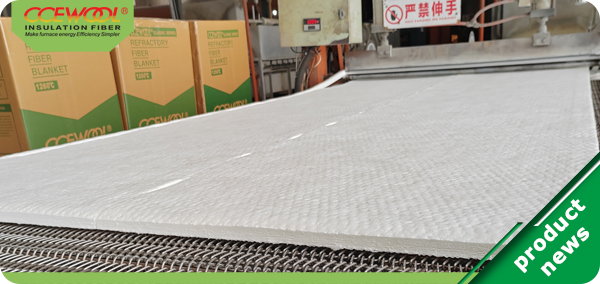Ceramic fiber is a traditional thermal insulation material widely used in industries such as metallurgy, machinery, electronics, ceramics, glass, chemical, automotive, construction, light industry, military shipbuilding, and aerospace.Depending on the structure and composition, ceramic fiber can be categorized into major types: glass state (amorphous) fibers and polycrystalline (crystalline) fibers.
1.The production method for glass state fibers.
The production method of glass ceramic fibers involves melting the raw materials in an electric resistance furnace. The high-temperature molten material flows out through an outlet onto a high speed rotating drum of multi-roller centrifuge. The centrifugal force of the rotating drum make the high-temperature molten material into fiber-shaped material. The high-temperature molten material can also be made into fiber-shaped material by being blown with high speed airflow.
2 Polycrystalline fiber production method
There are two production methods of polycrystalline ceramic fibers: colloid method and precursor method.
Colloidal method: make soluble aluminum salts, silicon salts, etc. into a colloidal solution with a certain viscosity, and the solution stream is formed into fibers by being blown by compressed air or spun by centrifugal disk, and then transformed into aluminum-silicon oxide crystals fibers through high-temperature heat treatment.
Precursor method: Make soluble aluminum salt and silicon salt into a colloidal solution with a certain viscosity, absorb the colloidal solution evenly with a precursor (expanded organic fiber), and then conduct heat treatment to transform into aluminum-silicon oxide crystal fiber.
Post time: Aug-07-2023


